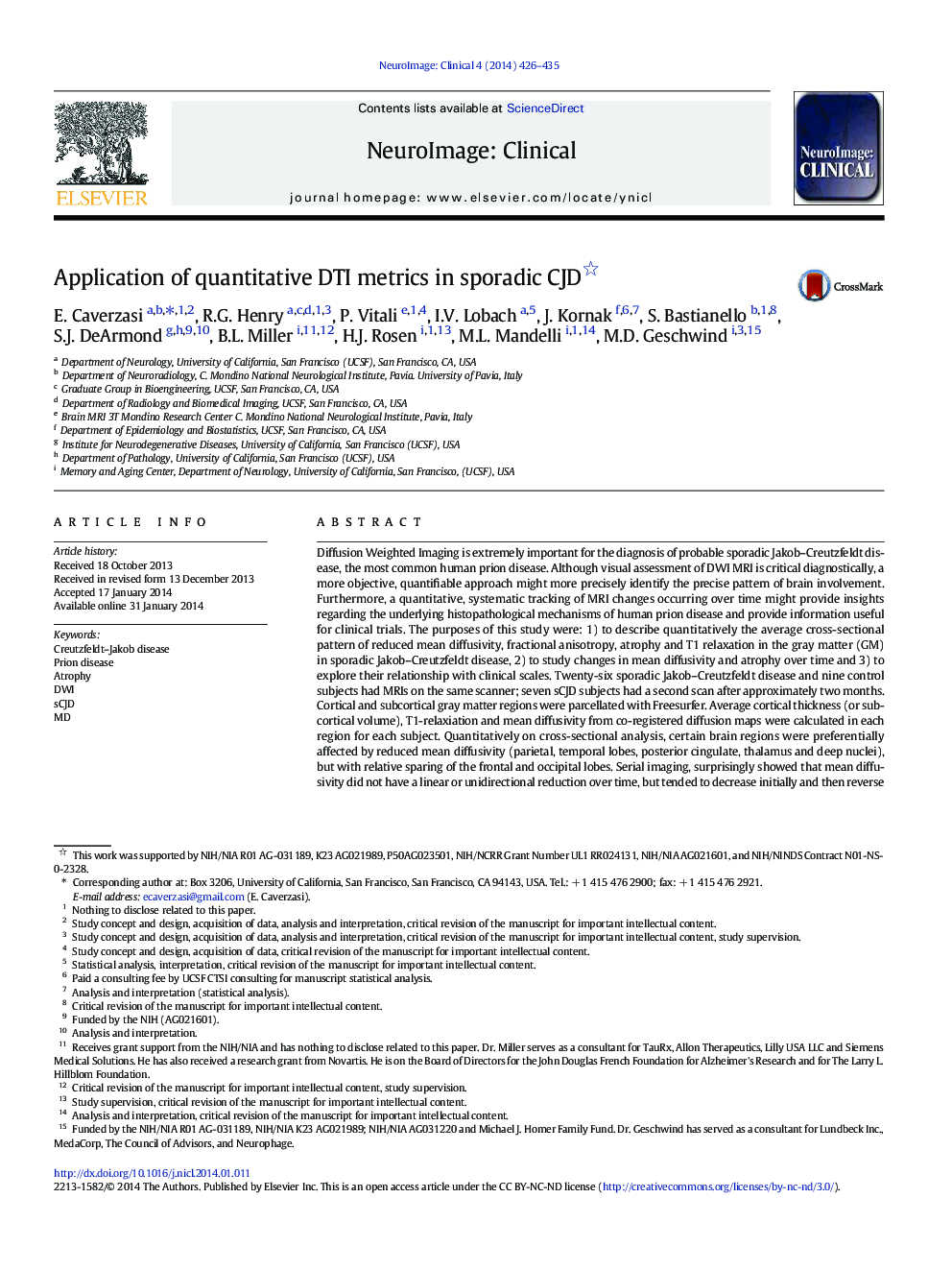| کد مقاله | کد نشریه | سال انتشار | مقاله انگلیسی | نسخه تمام متن |
|---|---|---|---|---|
| 3075324 | 1580963 | 2014 | 10 صفحه PDF | دانلود رایگان |

• Quantitative diffusion MRI in sporadic CJD shows preferential regional involvement.
• Longitudinally, mean diffusivity (MD) does not change linearly or unidirectionally.
• A “model” of MD change with disease progression is proposed.
• Phases with increasing MD show significant worsening of clinical function.
• Relative normalization of MD occurs in later phases of disease.
Diffusion Weighted Imaging is extremely important for the diagnosis of probable sporadic Jakob–Creutzfeldt disease, the most common human prion disease. Although visual assessment of DWI MRI is critical diagnostically, a more objective, quantifiable approach might more precisely identify the precise pattern of brain involvement. Furthermore, a quantitative, systematic tracking of MRI changes occurring over time might provide insights regarding the underlying histopathological mechanisms of human prion disease and provide information useful for clinical trials. The purposes of this study were: 1) to describe quantitatively the average cross-sectional pattern of reduced mean diffusivity, fractional anisotropy, atrophy and T1 relaxation in the gray matter (GM) in sporadic Jakob–Creutzfeldt disease, 2) to study changes in mean diffusivity and atrophy over time and 3) to explore their relationship with clinical scales. Twenty-six sporadic Jakob–Creutzfeldt disease and nine control subjects had MRIs on the same scanner; seven sCJD subjects had a second scan after approximately two months. Cortical and subcortical gray matter regions were parcellated with Freesurfer. Average cortical thickness (or subcortical volume), T1-relaxiation and mean diffusivity from co-registered diffusion maps were calculated in each region for each subject. Quantitatively on cross-sectional analysis, certain brain regions were preferentially affected by reduced mean diffusivity (parietal, temporal lobes, posterior cingulate, thalamus and deep nuclei), but with relative sparing of the frontal and occipital lobes. Serial imaging, surprisingly showed that mean diffusivity did not have a linear or unidirectional reduction over time, but tended to decrease initially and then reverse and increase towards normalization. Furthermore, there was a strong correlation between worsening of patient clinical function (based on modified Barthel score) and increasing mean diffusivity.
Journal: NeuroImage: Clinical - Volume 4, 2014, Pages 426–435